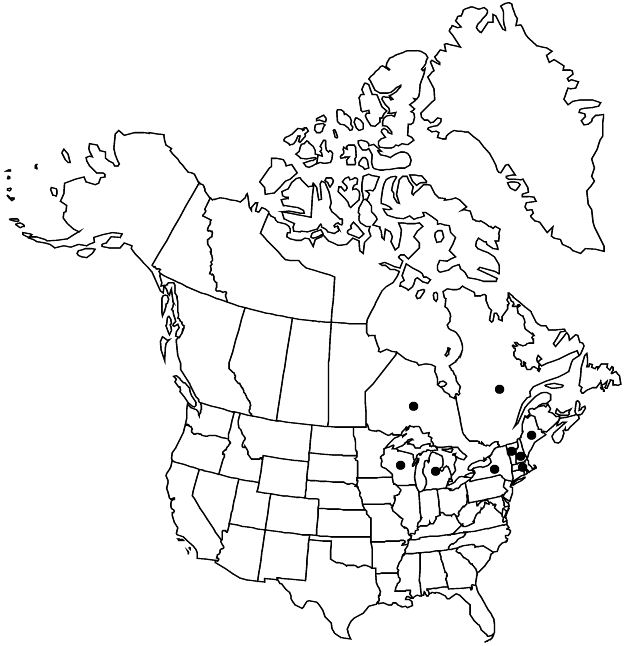Crataegus brainerdii
Rhodora 3: 27. 1901.
Shrubs or trees, 40–50 dm. Stems: twigs: new growth green, glabrous, 1–2-years old shiny, dark brown, older dark gray; thorns on twigs at 1-year old very dark, shiny, stout, 3–4.5 cm. Leaves: petiole length 40% blade, glabrous, glandular; blade ovate to narrowly ovate, 4–7 cm, base cuneate to rounded, lobes 3 or 4 per side, margins serrate, teeth numerous, sharp, fine, gland-tipped, especially near base, veins 5 or 6 per side (even young), apex acute, abaxial surface glabrous except for tufts in vein axils, adaxial glabrate. Inflorescences 7–12-flowered; branches glabrous; bracteoles absent or few at anthesis. Flowers 15–18 mm diam.; hypanthium glabrous; sepals narrowly triangular, margins glandular-serrate; stamens 20, anthers pink to red; styles 2 or 3(–5). Pomes reddish, ± oblong-orbicular, 8–9 mm diam., glabrous; sepals ± sessile; pyrenes 2 or 3, sides erose.
Phenology: Flowering May–Jun; fruiting Sep–Oct.
Habitat: Successional fields, brush
Elevation: 10–300 m
Distribution

Ont., Que., Maine, Mass., Mich., N.H., N.Y., Vt., Wis.
Discussion
Crataegus brainerdii has a scattered distribution and seems nowhere common. E. J. Palmer (1950) recorded it from North Carolina but this is well out of range. This species is similar in leaf shape to C. scabrida var. scabrida; it differs in stamen number.
Selected References
None.